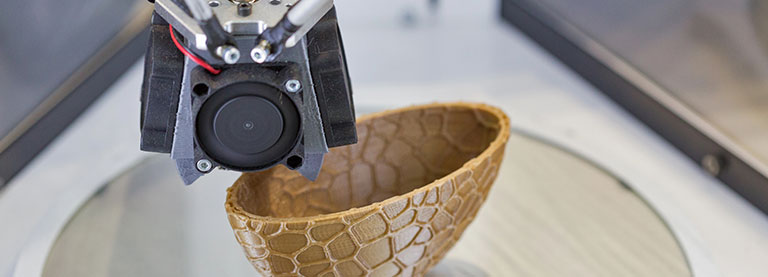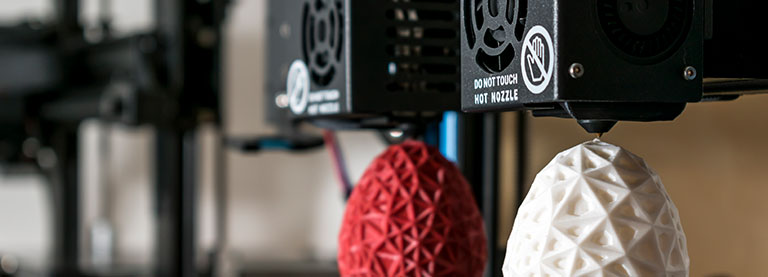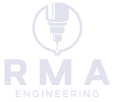
The Ultimate Guide to Choosing the Right 3D Printing Service

Additive manufacturing has rapidly transformed the way businesses approach product development. Whether you're looking to streamline your production process, reduce costs, or create more customized products, additive manufacturing offers a range of benefits that traditional methods simply can’t match.
However, is it the right solution for your business? In this article, we'll explore the applications, advantages, and considerations of adopting additive manufacturing for your operations.
What is Additive Manufacturing?
Additive manufacturing refers to a group of manufacturing processes that build 3D objects by adding material layer by layer. This contrasts with traditional subtractive manufacturing techniques, which involve cutting away material from a solid block. Often called 3D printing, AM enables the production of complex parts with high precision and minimal waste.
Using additive manufacturing, businesses can create prototypes, custom parts, and even functional products. This approach brings greater flexibility and efficiency compared to conventional manufacturing methods. Technologies such as Stereolithography (SLA), Selective Laser Sintering (SLS), and Material Extrusion allow businesses to design and produce products with complex geometries. These designs would be impossible or expensive to achieve using traditional techniques.
How Does Additive Manufacturing Work?
At its core, additive manufacturing begins with a 3D model of the part or product, typically created using Computer-Aided Design (CAD) software. This model is then sliced into layers, which the 3D printer reads to create the object layer by layer.
Depending on the type of material being used—such as polymers, metals, or ceramics—the printing process varies. However, the underlying concept of building up material layer by layer remains the same.
The key advantage of this process is its ability to produce highly customized and intricate designs that would be difficult or even impossible to create using traditional manufacturing techniques. Whether you need a small batch of parts or just one prototype, additive manufacturing offers incredible flexibility in production.
Benefits of Additive Manufacturing for Your Business
Speed and Efficiency
One of the most significant benefits of additive manufacturing is the speed at which parts can be produced. Traditional manufacturing methods often require tooling, molds, and a longer setup time. This can slow down the production process.
In contrast, AM allows for rapid prototyping and small-batch production without the need for expensive molds or long setup times.
For example, businesses in industries such as aerospace, automotive, and medical can take advantage of faster product iterations. With additive manufacturing, engineers can create and test multiple prototypes in a matter of days.
Additionally, online 3D printing services like those offered by RMA Engineering allow businesses to quickly order prototypes and finished parts. This streamlines the production process without the need for in-house 3D printing capabilities.
Customization and Flexibility
Unlike traditional manufacturing methods, additive manufacturing allows for a high level of customization. Since each part is built layer by layer, it’s easy to modify designs and create unique, customized products. This is particularly useful for industries like medical devices, where patient-specific parts can be designed and produced on-demand.
With AM, businesses can produce limited runs or one-off custom pieces quickly and cost-effectively. This customization can be applied across various industries, from creating bespoke products in fashion to crafting custom prototypes for engineers. The flexibility to create unique parts, whether for a one-off prototype or for small batches, is a significant advantage.
Reduced Material Waste
Additive manufacturing is a more sustainable option compared to traditional manufacturing methods, which often involve cutting away material from a solid block. The additive process uses only the material needed for the part. This means less waste and lower costs.
For example, in industries where material cost is a significant factor, AM can be particularly advantageous. Reducing material waste and using only the required amount of raw material, businesses can reduce overall production costs.
Design Freedom and Complex Geometries
One of the standout advantages of additive manufacturing is the freedom it gives businesses to create complex, intricate designs that would be impossible or prohibitively expensive with traditional methods. With AM, parts can be designed with internal features, unique shapes, and custom geometries that enhance performance and functionality.
For example, aerospace manufacturers can design lighter, stronger parts by integrating internal structures that reduce weight without compromising strength. Similarly, medical professionals can create custom implants and prosthetics tailored to a patient’s specific needs. This improves both functionality and comfort.
Cost-Effective for Small Production Runs
Additive manufacturing is particularly useful for businesses that need to produce small quantities of parts. Traditional manufacturing often requires expensive molds or tooling. This makes it cost-prohibitive for small production runs. However, with AM, the same digital model can be used to create multiple parts without the need for tooling. That’s why it’s ideal for small batches or even one-off production. The cost-effectiveness is a significant advantage for businesses in industries such as prototyping, automotive, and consumer goods, where small production runs are common.
On-Demand Production and Supply Chain Efficiency
With additive manufacturing, businesses can produce parts on-demand, reducing the need for large inventories and improving supply chain efficiency. The on-demand production model helps reduce storage costs and minimizes the risks associated with overstocking or stockouts.
For example, companies can quickly manufacture spare parts when needed. This eliminates the need to keep an inventory of parts that may not be used for months or even years. The just-in-time production model is particularly beneficial for industries like automotive and manufacturing, where demand for parts can fluctuate.
Additive Manufacturing Applications Across Industries
Aerospace
Aerospace manufacturers are increasingly adopting additive manufacturing for its ability to produce lightweight, high-performance parts with complex geometries. Using materials like titanium and aluminum, manufacturers can create parts that are both strong and lightweight. This helps reduce overall weight and improve fuel efficiency.
Automotive
In the automotive industry, AM is used for both prototyping and producing final parts. Manufacturers can quickly test and iterate designs for components. AM allows for customization in parts. This makes it easier to produce specialized components for specific models.
Medical
One of the most exciting applications of additive manufacturing is in the medical field. Custom implants, prosthetics, and surgical tools can be produced quickly and tailored to individual patients’ needs. This level of customization improves patient outcomes and can significantly reduce costs.
Consumer Goods
Additive manufacturing is also used in the consumer goods industry for creating prototypes, limited runs, and custom products. Whether it’s custom-designed clothing, footwear, or electronics, AM comes with the flexibility to create unique products that meet specific customer needs.
Manufacturing and Industrial Applications
In manufacturing, additive manufacturing can be used to create tooling, jigs, and fixtures that help optimize production processes. These custom tools can improve assembly line efficiency, reduce errors, and cut down on costs associated with traditional tool production.
Post-Processing and Finishing
While additive manufacturing offers flexibility and speed, the final product often requires finishing to meet the desired appearance or functionality. RMA Engineering’s 3D post-processing services make sure that your 3D printed parts meet the necessary standards. These services include support removal, surface smoothing, painting, and more. They help you refine the look and functionality of your prototypes or final products.
Is Additive Manufacturing Right for Your Business?
Ultimately, the decision to adopt additive manufacturing depends on your business’s specific needs and goals. If you require rapid prototyping, small-batch production, or highly customized parts, AM is a powerful tool that can improve your design process, reduce waste, and accelerate time to market.
For businesses looking to adopt additive manufacturing, working with a trusted partner can make all the difference. At RMA Engineering, we offer online 3D printing services that cater to businesses of all sizes. From rapid prototyping to post-processing, we have the expertise and tools to help you integrate additive manufacturing into your workflow.
Ready to start exploring the benefits of additive manufacturing for your business? Contact RMA Engineering today to learn how our services can streamline your product development process and take your business to the next level.
Recent Posts


Top Benefits Of Prototyping For Product Development

How Prototyping Using 3D Printing Enhances Design Flexibility
Contact Us
For custom quotes please fill out the form below. Or email us at info@rmaengineering.tech.

